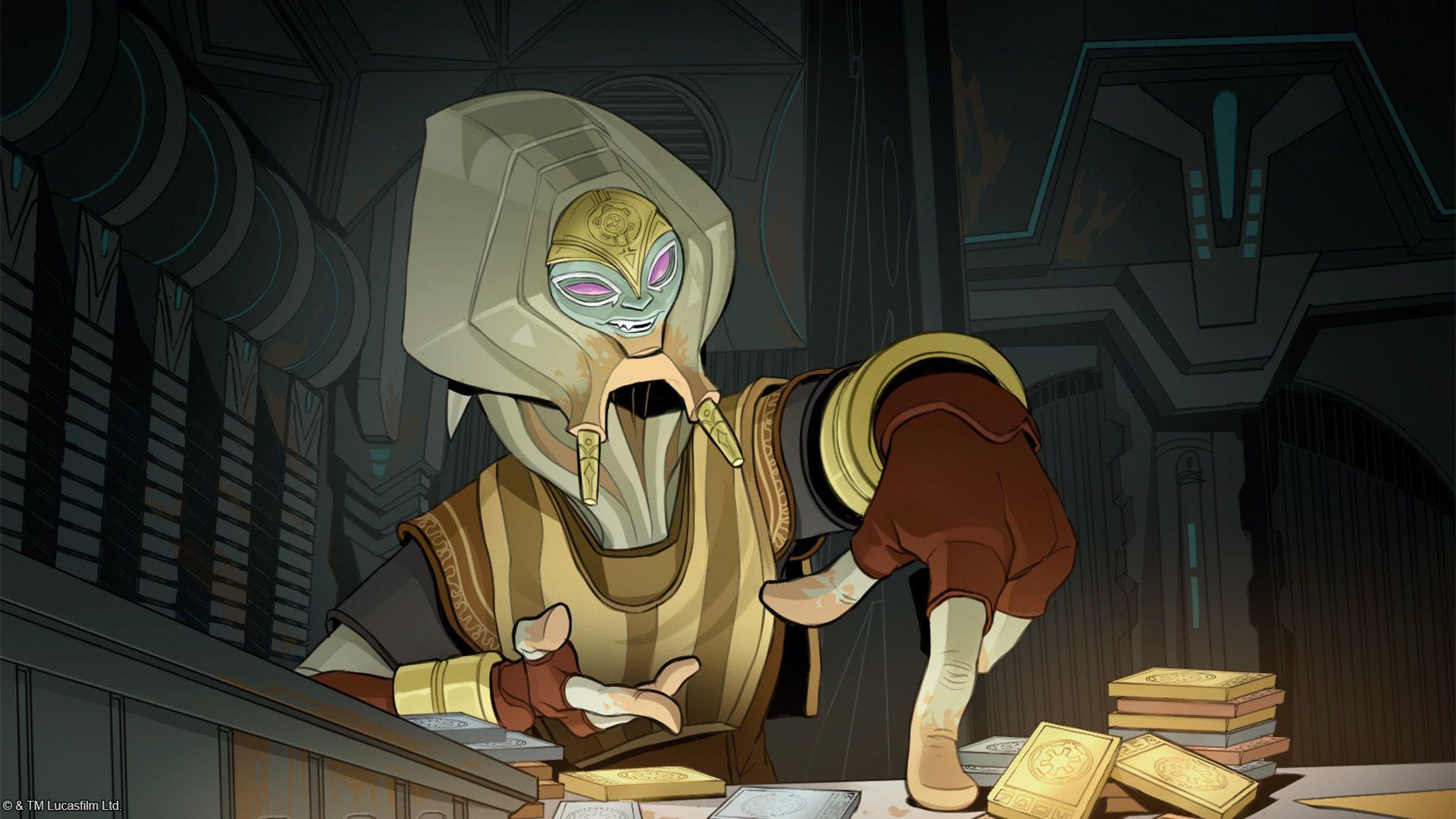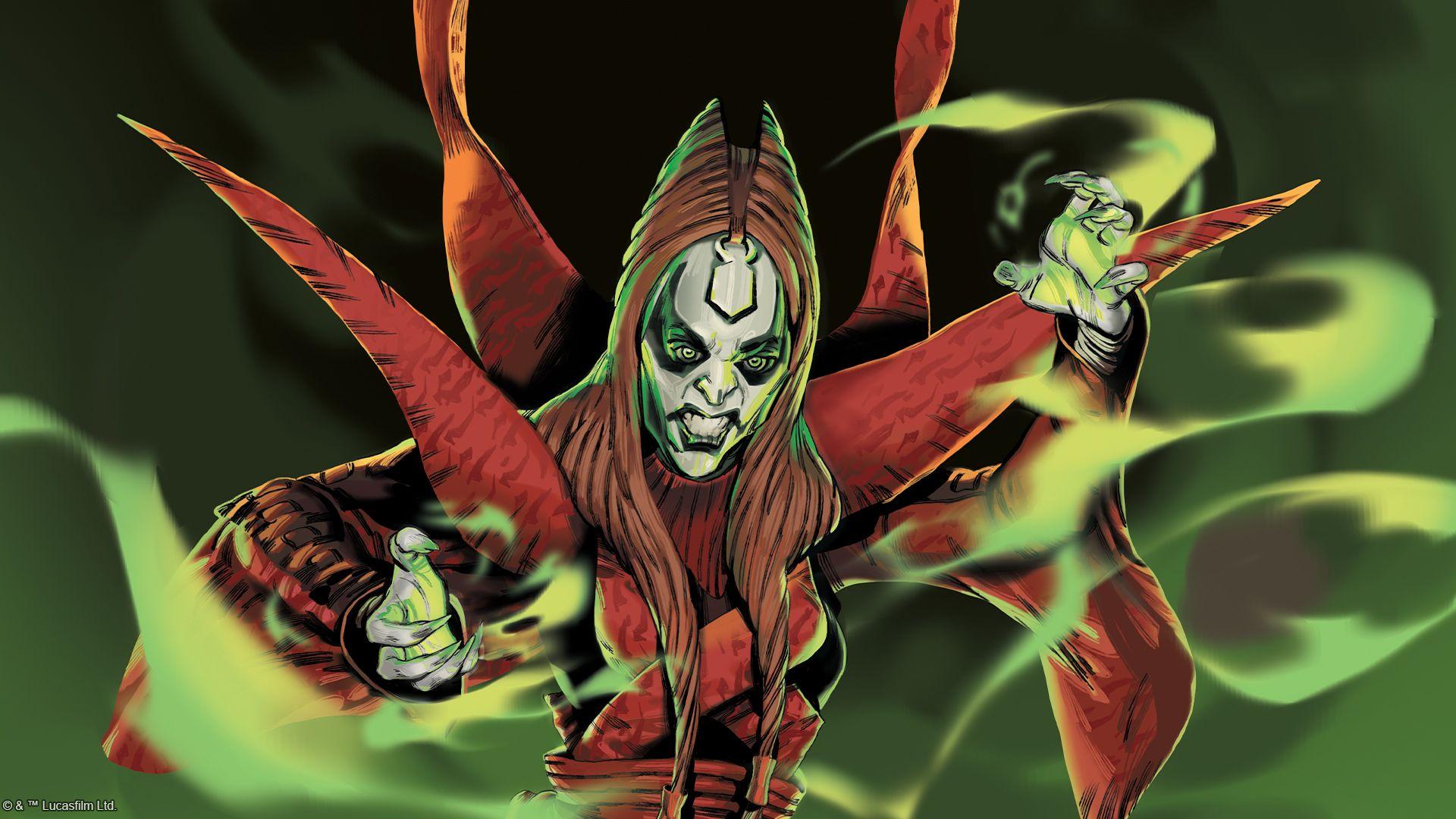Behind Unlimited: Recalibrations
Power creep is a scary term. It invokes anxieties about favorite cards being invalidated, rumors of corporate cash-grabs, and fears of unbalanced, potentially broken metagames. It’s also, unfortunately, a fact of life: new cards are always going to need to be a little bit better than older cards if they want to keep up. Game designers are human, and sometimes mistakes happen, and when those mistakes are in the “too powerful” direction, then those cards end up dominating tournament metagames until they leave the card pool via rotation or banning. If we want to keep printing desirable cards, occasional mistakes and the desire for certainty (on the developers’ part) will inevitably result in cards getting a little bit better over time. The best we can do is to forestall power creep with careful, intentional development standards, so that players can continue to play with their favorite cards for as long as possible.
This is not an article about power creep. It is, instead, about those intentional development standards that we use to combat power creep, and how beginning in Year 2 we have adjusted those development standards to make the Star Wars™: Unlimited trading card game more fun and balanced. However, if I didn’t start with an acknowledgement of what power creep is, and why development standards exist, it would be really easy to mistake what you’ll see beginning in Jump to Lightspeed as power creep. Because when we recalibrated our development standards, it mostly looked like “some of these units need to be a little bit stronger."

The Power Line
When tackling the challenging issue of “how to make a game balanced,” one has to fundamentally understand the system that one is working within. And for this game, the system begins with a few foundational facts, including this one: every round, each player will gain a resource.
With a linear resource curve, we can definitively say how an average unit’s damage output and card advantage will relate to other units at other cost values. The 2-cost unit, for example, is 100% guaranteed to enter play on round 1, and the 4-cost unit is 100% guaranteed to enter play on round 3. If we therefore assume that they have roughly comparable stats, then the 4-cost unit should be able to defeat two to three units that cost 2—the card advantage of the 4-cost unit is counterbalanced by the fact that the 2-cost units get to accumulate damage before being defeated. In the development of Spark of Rebellion, we made a point to clearly define the relationship between cost and stats to fulfill this basic dynamic: each point of increase in a unit’s cost roughly correlates to that unit gaining 2 stats. Additional points of power allow a unit to put out more damage before being defeated, while additional points of HP allow a unit to generate more card advantage over the course of the game.

However, cost is not the only factor. After all, there are lots of ways that a unit might be stronger or weaker than other units to make them distinct from one another. After all, it wouldn’t be any fun if all the 2-cost units were Battlefield Marines! This game has a number of ways that it subtly introduces a power curve into its units, primarily through the use of opportunity cost.
The most overt handicap a unit might have is applied by way of the aspect system. Simply put, each additional aspect that a unit has decreases the number of decks that unit can be efficiently played in. When considering cards for a Luke Skywalker (Faithful Friend) deck, if a card that is Vigilance-Heroism and a card that is just Vigilance are both at the same cost and power level, then either one is worth putting in the deck. However, the Vigilance-only card is just as playable in a Vigilance Darth Vader (Dark Lord of the Sith) deck, which means that that card gets played in a lot more decks, and the Vigilance-Heroism card barely sees any play. The opportunity cost of playing the Vigilance card (playable in lots of decks) is much lower than the opportunity cost of the Vigilance-Heroism card (playable in far fewer decks), and thus making these two cards equivalently powerful would result in a less diverse metagame—the opposite of what we want!
Other handicaps that a unit might have are colored by the intentions of the game’s design. Uniqueness is a very clear one: if a card is unique, you can only control one copy of that unit at a time, which gives it less in-game flexibility than a card that isn’t unique. However, design intent also applies here. Because this game is based on a popular story-setting, the cards that most people will want to play with are the named characters that they personally love—not the nameless soldiers and scoundrels that make up the background of the narrative. Therefore, we want our unique units to be slightly stronger than our non-unique units, both to compensate for the in-game limitations of being unique, and also so that high-level play is defined by the interplay between beloved characters from the franchise.
Similarly, the arena that a unit is played to influences its balance. For most sets, we want space units to be just a little bit weaker than ground units, so that most of the game’s action takes place on the ground (where the most iconic and beloved characters are played). This can be seen by comparing similar cards that have essentially the same effect: on the ground, Underworld Thug is a 2 cost 2/3 vanilla (no abilities) unit with no aspect, while in space an Alliance X-Wing is also a 2-cost 2/3 vanilla unit—but it has an aspect, and therefore a slightly higher opportunity cost.

Once you combine these handicaps in different ways, you can start to see clear differences in power level even among cards at the same cost. All this is useful context to understand where the development of a unit begins, however. With most cards having abilities that provide contextual advantages or disadvantages, the final decision on what a unit’s stats should be is decided after rigorous playtesting to see just how strong (on average) a particular ability is, and how fun (on average) it is, to determine whether a unit’s stats should be above or below the “average” established by the vanilla units in the game.
Understanding the factors that go into balancing a unit’s stats is important within a cost point because at the end of the day, we want our most powerful units at each cost point to be the 2-aspect unique ones, and we want our least powerful units to be the colorless non-unique ones. When comparing units between cost points, it’s important that we account for the factors of aspects, uniqueness, and arena to ensure that the comparison is fair and accurate. But understanding the relationship between the stats of units at the same cost can only get you so far; what constitutes an “average” unit’s stats, anyway?
Setting Standards
The stats on Battlefield Marine were not chosen arbitrarily. Rather, they were chosen based on the environment that we intentionally constructed in Spark of Rebellion after months of playtesting and experimentation. That environment, which defines the entire context that a unit’s stats exist within, is based on two important thresholds defined by the rest of the card pool: the 30 HP bases and the curve of “break points” defined by the removal events we put into Spark of Rebellion.

For a very large period during the development of Spark of Rebellion, the common bases in the game had 25 HP. We tried 30 HP bases initially and found that our games were lasting about 1 round longer than we wanted on average (one of the foundational goals for this game was games lasting an average of 15-20 minutes). So, we reduced the base HP to 25 and we found that we started getting games that were the length we wanted. However, after a couple months of playing with 25 HP bases, we discovered a different set of challenges to solve: what stats could we give our rare bases and our 1-cost units so that both would be exciting to play?
The bases were so constrained on how much HP they could have (to accommodate their text) that they were constantly fluctuating between “too ubiquitous” and “never being chosen,” while the 1-cost units were so limited in what their stats could be—because they had so much explosive potential—that players weren’t having fun playing with them. Eventually, we reinstated 30 HP bases so that we could have a greater ability to fine-tune the stats on our cards, but did so alongside a general increase in the overall stats of our units. The goal, which we tested rigorously, was to maintain the game length but to allow for more of a precise and diverse allocation of stats at every point on the cost curve.
Meanwhile, we established certain HP break points based on the numbers we put on our removal events. We needed the cards in Spark of Rebellion to be clear and simple, which meant we had to answer the question “how much damage does 3-cost Open Fire do?” and “how many resources does it cost to defeat any unit in the game?” What we landed on was a curve of removal wherein a player could spend X resources to defeat a unit with X+1 HP, with some subtle variation in context based on aspect (Aggression struggles to get through shields, while Vigilance can’t combine two removal events to take down a larger threat). Once a player gets to 5 resources, they can start defeating any non-leader unit in play regardless of HP.

These two factors fundamentally define the context in which a unit’s stats exist. The 30 HP bases set the conditions for a unit’s power: on average, an “aggressive” unit defaults to its power being equal to its cost + 1 so that it presents a threat but doesn’t end the game too fast. And the break points defined by the numbers on our removal events set the conditions for a unit’s HP—in order for a unit to survive the round it’s played, it needs to have at least 2 more HP than its cost or else it’s susceptible to being immediately removed.
Between these two factors, we defined the average stats for units: an “aggressive” unit defaults to approximately cost + 1 for both its stats (such as Battlefield Marine, the 2-cost 3/3) and a “defensive” unit defaults to having its power equal its cost and 2 more HP (such as Liberated Slaves, the 3 cost 3/5). As discussed above, these stats are for the cards that we expect to be played in Premier, which means two-aspect and/or unique units. If the format is full of “aggressive” units, then event-based removal at the defined break points gets more effective as a way to prevent damage and prolong the game (the General Grievous (Trophy Hunter) unit defeated by an Open Fire deals zero damage) and if the format is full of “defensive” units then event-based removal gets a lot worse (Open Fire can’t defeat Liberated Slaves) but the aggressive units get more effective (General Grievous (Trophy Hunter) gets to deal 4-8 damage before trading with the Liberated Slaves) and early board advantages get more important.
Converging at the Center
Everything I’ve discussed so far has been very mathematical and balance oriented. But when someone sits down to play a game, they’re not interested in how mathematically balanced the game is—they want to play something fun. So, while we were analyzing the systems that our cards were producing and existing within, we also had to ask ourselves “where is the fun?"
The answer to that question, of course, is qualitative. But between the decades of TCG experience among the design team, as well as the direct feedback we were getting from playtesters about the game we were designing, we were able to identify certain things that we found important enough to the “fun element” of the game to intentionally prioritize.

The most foundational thing that draws people to strategy games is making decisions that matter. We had built the mechanical foundations of this game around a certain set of in-game decisions (Which card do I resource each round? Which action do I take each turn? Which unit or base do I attack?) and players had the most fun when they got to have a variety of options to select between when they made each of those choices.
Similarly, for a game based on a beloved story setting, players really want to play with their favorite characters. Players want to put those cards onto the table and then attack with them, upgrade them, use their abilities, or otherwise see them doing powerful or silly things that feel like the character they represent. And players want a game to present an emotionally satisfying arc, like a narrative. They want a beginning where players are setting up their pieces and communicating what their strategy is going to be, a middle where both players clash their forces into one another, and an end where a climactic battle defines a victor. If the experiential arc of the game was satisfying, then both players will want to shuffle up and play again—and if games only take 15-20 minutes, then they should have ample time to do so.

Taken together, these three pillars of “fun” present a clear picture for what we want the game to look like: character-driven, presenting lots of decisions, and neither over too soon nor dragging on too long. Specifically, this means that the game is fundamentally unit-driven, as having more units on the board more often achieves both the “play with your favorite characters” goal and the “have lots of options to make decisions” goal.
But the experiential arc of a game breaks down when both players are playing strategies so silo’ed that they don’t experience it. If hyper-linear aggro decks focused exclusively on reducing the opponent’s base to 0 HP are too fast, then the game ends before one player gets to play with their cool characters. If hyper-linear control decks focused on removing every unit from the board are too strong, then the opponent doesn’t get to play with their cool characters and the game lacks an emotional climax because it drags on too long.
Therefore, going into Year 2, we recalibrated our goals and expectations for the game: push the game away from the extremes and towards the midrange.

Recalibrated Results
With a clearer goal for how we wanted the game to play going into Year 2, we took stock of the metagame of Year 1 and looked for what we would need to adjust in order to achieve that goal. The most important thing was related to unit survivability: we had been fairly reserved with the stats of our units, especially the two-color unique ones that we wanted to prioritize for Premier play, and this meant that there were very few units in the card pool that could survive the HP break points defined by our event-based removal. Units that we had originally considered “pushed to the limit,” such as Millennium Falcon (Piece of Junk) and Boba Fett (Disintegrator) were actually pretty manageable by the card pool we had already built and so we embraced them as more representative of the kinds of units we wanted to make more of rather than as exceptions to the rule.
Similarly, we found that the power threshold we had set by our 1-cost units was just higher than the power level of our 2- and 3-cost units (for the most part). Greedo, Death Star Stormtrooper, and Cartel Turncoat were strong cards, but with a few exceptions most of our 2-cost units were struggling to keep up. A deck full of 1- and 3-cost units wasn’t being punished by decks trying to play on curve, and it was leading to hyper-aggressive decks that we were growing increasingly concerned about. We couldn’t make the 1-cost units worse, but we could very safely make our 2-cost units have more stats to fill the gap between Greedo and Boba Fett.

Finally, we were seeing concerning trends towards the extremes. The Aggression-Heroism package led by Sabine Wren (Galvanized Revolutionary) was getting faster and more all-in, while the Vigilance-Villainy package led at various times by Iden Versio (Inferno Squad Commander), Bossk (Hunting His Prey), and Emperor Palpatine (Galactic Ruler) was getting more and more effective at drawing out the game indefinitely. Some of this is good and healthy—you want a variety of playstyles to be viable so players can customize their game experience—but we wanted to make sure that we weren’t letting decks deviate so far from the core loop that made the game fun that it stopped being, well, fun.
These are the lessons we had in mind when we approached the development of Jump to Lightspeed, Legends of the Force, and Secrets of Power. Some of the units you see over the course of the year may look a little bit stronger than the average unit in Year 1—that is intentional. We recalibrated our expectations for (mostly unique) units across the board, and that recalibration was based around the most-played and most exciting units from the first three sets. So far, we’ve found that recalibration has led to significantly more fun and diverse games of Star Wars: Unlimited. I can’t wait to see what people build with the exciting new cards you’re going to begin seeing in booster packs over the coming year.
May you be inspired to try something new!
Written by Tyler Parrott
Share This Post



